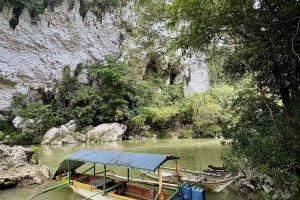
There are four areas comprising this property: (1) Sohoton Natural Bridge National Park, (2) Calbiga Caves Protected Landscape, (3) Jicontol Natural Park; and (4) Taft Forest Philippine Eagle Wildlife Sanctuary. In March 2025, I visited Sohoton Natural Bridge Park, arguably the easiest to visit among the four, given its proximity (only an hour or so) from Tacloban City, a major urban area of the Eastern Visayas region.
Several studies already prove Samar Island Natural Park's biodiversity and geoheritage values. Instead I will commend the positive impact of engaging local communities (especially those living within the park), i.e., members of the cooperative serve as tour guides, entertainers, food caterers, kayak and boat drivers, etc. They are on the right direction towards sustainable development through community-based heritage management.
Keep reading 0 comments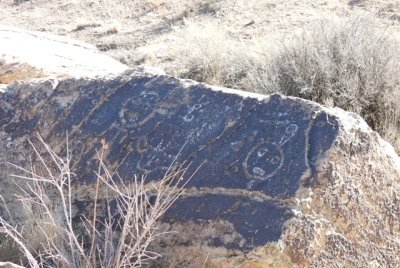
Visit date(s): February 5, 2025
Nearby sites on trip: Grand Canyon
Overnight locations: Flagstaff and Winslow. For people interested in the architecture of Mary Colter, there is a beautifully restored railway hotel in Winslow. It was a highlight of our week in Arizona.
Location(s):
- Visitor Centers
- Giant Logs and Puerco Pueblo trails. (photo of petroglyphs at Puerco Pueblo)
- Almost all overlooks
- Blue Mesa drive
- Painted Desert Inn National Historic Landmark
Travel method(s): car
Travel duration: 1-2 hours between overnight locations and the park
Visit duration: half day
OUV: The abundance of petrified wood and other fossils provides information about the late Triassic period. Aside from the fossils, there are pueblo sites, petroglyph’s and the remains of more recent human activity. Maybe these remnants of other cultures are not as uniquely significant as in other locations, but they do show that people have been interacting with the fossils for a long time.
Best of: Getting up close and personal with the giant logs. They are extremely colourful up close. The painted desert views are also spectacular.
Worst of: Very open and exposed landscape that would be blisteringly hot in the summer.
Keep reading 0 comments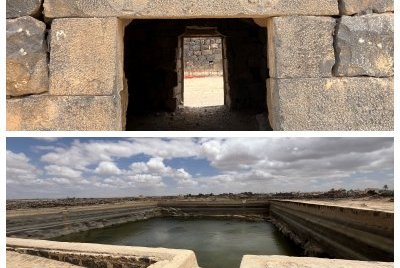
Despite its relative obscurity, Umm Al-Jimāl has been praised as “an archaeologist’s dream”. It’s not hard to take pictures here that would make it look like a Roman-Byzantine site, and the even earlier Nabataeans passed here too, but 90% of the site consists of vernacular architecture based on locally available and finely cut basalt stones. The site museum glorifies the “indigenous people [probably Arab nomads who settled down].. who continued their traditions and were no puppets of the various rulers”; the OUV is also solely based on the rural lifestyle of these Hauranian people. At the time, around 500-800 AD, Umm Al-Jimāl was a prosperous town based on agriculture and serving the next major city of Bosra (nowadays 80km away by car since you have to find a border post into Syria, but as the crow flies or the camel walks it is only 25km).
The archaeological site still requires no entrance fee and can be entered both via the south (where a friendly tourist police station is) and the northwest (adjacent to the central street of the modern town). The south is the main entrance, and the first stop here is the small site museum. It occupies a restored house typical for the area, built with sturdy black basalt stones to withstand the heat and with the horse stables inside. In the museum collection, the multilingual inscriptions stand out, such as the Dushara inscription on a cult stone with text in both Greek and Nabataean.
The …
Keep reading 0 comments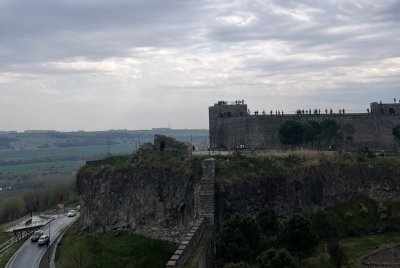
This site covers a lot of ground and is hard to get a feel for on your own — just the walls of the city themselves are the 2nd widest and longest complete defensive walls (after only the Great Wall of China)! However, I found that visiting the Diyarbakir Archeology Museum first gave great contextualization for the rest of the city. Price is 3 euros for foreigners in Spring 2025.
Across from the museum, you can walk along a portion of the wall by climbing some steep stairs to reach the top. You can also get a view of the Hevsel gardens in the distance. This was a popular activity and you could see many young people taking pictures of the view. The WHS itself, without the museum, is left unexplained and the walls in particular have a lot of graffiti/vandalism. Walking along the walls, I found a lot of names etched in the bricks, spray paint, etc. Overall, I think the site has a ways to go in terms of restoration, as well as accessibility of information.
Keep reading 0 comments
I visited Andorra as a day trip from Barcelona in March 2025. The 7 hours I had in the country were enough to visit 2 of the locations of this TWHS, which compensated the fact that I couldn't visit the Madriu-Perafita-Claror valley WHS.
I first walked from Andorra La Vella to Santa Coloma, it's just a 30-minute walk, mostly along the river. On your way to Santa Coloma you get great views of the Roc d'Enclar, that is also part of this TWHS. The church of Sant Vicenç d'Enclar looks very picturesque on top of the rocky hill and against the mountains rising behind it. I have no clue how you can get on top of the Roc d'Enclar where the church is, it must require some serious hiking!
In Santa Coloma the TWHS site is the church of Santa Coloma (photo attached). To visit it you must go to the Espai Columba museum that is next to it. This is a very small and modern museum. Your entrance ticket includes an audio guide that first leads you through the museum and then to the church. The museum is essential to visit as all the medieval murals from the church are located now in the museum, not inside the church. The murals were taken from the church in 1932 and they've traveled all around the world until returning to Andorra in 2007. The museum has very nice design and the murals are located in a room that …
Keep reading 0 comments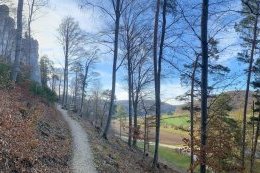
I visited both Geißenklösterle and Sirgenstein Cave. I went during off season, so the larger and more impressive cave in that section was closed to the public.
But for the other two:
Really lovely place. At first glance the caves are underwhelming, they basically look like any other small cave that you have seen. However there's something fascinating about being in a place where people were making art 40k years ago. It blew my mind as soon as I entered the caves.
The walk/run/bike between the caves is also very very beautiful and worth taking your time to connect with it. And the Blaubeuren museum is a must.
I wouldnt recommend it unless you're very interested in art history, otherwise it is just boring caves.
Keep reading 0 comments
Visited in January 2023.The park is the main center of endemic species (and all kinds, both flora and fauna) in Cuba, and in general the largest ecosystem of rainforests in the Caribbean region.It is located on the eastern edge of the island, near the city of Baracoa, with the foundation of which European colonization began here. Getting there is not so difficult, first you need to get from Santiago de Cuba to Baracoa. Initially, I planned to book a tour to the park from there, but the owners of Airbnb flat convinced me that there was no point in this, it was easier to take a taxi to the park and back. The road is very bumpy, you have to shake quite a bit.In the visitor center, you can choose one of several routes that are most suitable in terms of difficulty and duration, you must go with a ranger. Our small group got a combined option, we went along the Loma de Piedra trail, it is 8 km long hike, we only had three hours, and the ranger just led us along part of the route during this time.But we managed to climb to the top of the mountain (only 1110 km), from where a wonderful view of Taco Bay opens upThe soil is red, there is a lot of iron and other minerals, which leads to the appearance of many endemic species in the park. For me, a small joy was to see a chameleon that changed color …
Keep reading 0 comments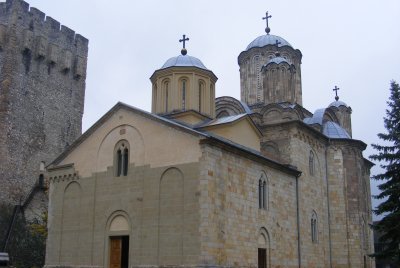
On a damp October day I visited the Manasija Monastery on the way back from a day out at Resava cave and Lisine waterfall which made for a very pleasant day of sightseeing.The monastery was okay, as a building it was functional, nothing particularly impressive about it, a typical Byzantine style, orthodox church and monastic buildings and the fortifications were quite interesting but I did detect a certain amount of negativity towards me, as a tourist, from the priests inside the monastery and an Irish nun who ran the gift shop. I mean, if you don't want tourists don't have a gift and souvenir shop.I love Serbia, it's one of my most visited countries but I have come across this negativity from the orthodox world several times there which is a shame.Overall, the Manasija Monastery isn't somewhere I would say that makes a worthwhile destination, but combined with other attractions in the area (the waterfalls, caves, the eco town at Velika Plana, etc) it makes an interesting inclusion.When compared to the fortified churches in Romania it doesn't quite hit the mark for me.
Keep reading 0 commentsMing_9734
Palau de la Musica Catalana & Hospital de Sant Pau
Palau de la Musica Catalana & Hospital de Sant Pau (Inscribed)
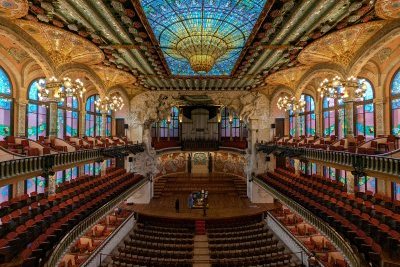
The Palau de la Música Catalana, built between 1905 and 1908, is a masterpiece of Catalan Modernism and Art Nouveau. It is the crowning achievement of the renowned architect Lluís Domènech i Montaner. Due to its contributions to architecture, music, and culture, it was included on the UNESCO World Heritage List, along with the architect's other notable work, the Hospital de Sant Pau. It is also the only concert hall in the world to be listed as a World Heritage site.
The Palau de la Música Catalana was funded by the Orfeó Català, a Catalan choir, and designed by Lluís Domènech i Montaner, one of the three great architects of Barcelona. The design fully embodies the Modernist style of Barcelona, incorporating an abundance of colorful stained glass mosaics, ceramic tiles, wrought-iron art, and intricate sculptures. The building cleverly utilizes natural light and natural imagery. Compared to the more famous works of Antoni Gaudí, Domènech’s style focuses more on the use of mosaics rather than curving, irregular lines. His use of colors and decorations is more vibrant and splendid, creating a perfect union between decoration and architectural structure, blending both functionality and aesthetic beauty.
The exterior of the Palau de la Música Catalana is mainly adorned with large, magnificent sculptures, and the columns on the balconies are decorated with ceramic mosaics featuring various floral patterns, reflecting the Modernist reverence for natural elements. The interior is equally impressive, with lavish sculptures, exquisite stained glass, and metallic decorations showcasing the intricate …
Keep reading 0 commentsAndrew_Kerr
Knights Fortifications around Harbours of Malta
Knights Fortifications around Harbours of Malta (On tentative list)
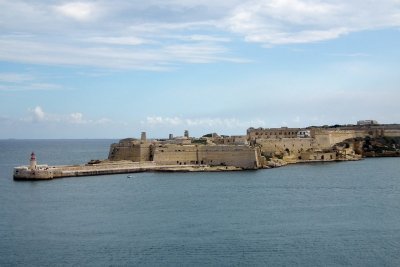
I agree with the comments of others here, this nomination makes little sense, the city of Valletta is already a UNESCO site, it's a tiny city, the smallest capital in Europe, and the fortifications are an integral part of the city.It looks like an attempt to draw more tourists in to be honest.Don't misunderstand me, the fortifications are impressive and made from that beautiful honey coloured stone that makes Malta so unique but it would be a travesty to get a separate listing when many places in need of inclusion are left out.Many cities do have multiple listings, London and Paris are just a couple of examples, the difference here is that the whole city of Valletta is a UNESCO site so it already encompasses all elements.
Keep reading 0 comments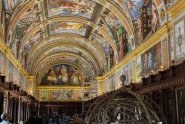
My visit to El Escorial was in November 2024 as a part of my nine months living in Madrid, Spain, and I have to say, El Escorial continues to stand out as one of my favorite sites in the country. The monastery is just massive and stunning beyond words... every time you think you've seen the final room, there is another one full of incredibly intricate, lavish detail sitting beyond the next doorway, and it continues on and on like this for hours. Frankly, a lot of the royal palaces in Spain are quite large and have a lot of distinct, highly decorated rooms, but El Escorial has them all beat. El Escorial was built both as a religious complex and a royal setting blended together. When we first arrived we were a bit peeved because the entry price + guided tour seemed to be pretty high. However, after having taken the tour and seeing the enormous size of the site, we now understand and think it's worth every cent.
My takeaway is that I cannot recommend El Escorial enough. Seemingly endless content to see, it's a great daytrip from Madrid. The biggest knock against it is perhaps that the town surrounding it does not have much to do other than a nice public park.
Some have said that there is a no-photography rule, and maybe that was the case in the past, but it is no longer true except for one specific room within the complex. …
Keep reading 0 comments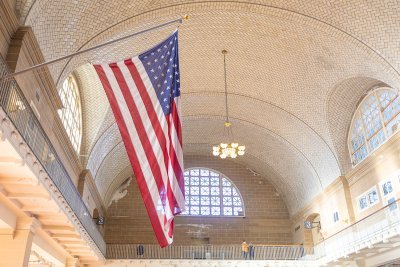
I visited Ellis Island along with the Statue of Liberty on a fine day in Dec 2024. I felt that it was timely to write a review of Ellis Island, given the current administration's stance on immigration, and I also think this site deserves a place on the World Heritage list.
Voluntary immigration
To my knowledge, UNESCO has not done a specific thematic study exclusively dedicated to potential World Heritage Sites associated with voluntary and large-scale immigration. In this context, voluntary immigration involved immigrants who sought better economic opportunities, escaped persecution, or wanted to reunite with family.
The island is known for its historical significance as the primary immigration station for the United States from the late 19th century to the mid-20th century. If there were such a study, Ellis Island would definitely banner the thematic study alongside the Statue of Liberty. If the US were to nominate Ellis Island to the World Heritage list, including Angel Island Immigration Station in San Francisco Bay (as Kyle suggests) could strengthen the case for the site. Here's an article that nicely compares Ellis Island and Angel Island. Ellis Island and Angel Island also remind me of Pier 21 in Halifax, Canada, which served roughly the same purpose as Ellis Island.
The island
We hopped on the ferry after visiting the Statue of Liberty in the morning. We docked right in front of the Museum of Immigration, housed in the former main building on the island’s northern side. …
Keep reading 0 comments
A short ferry ride across the bay from Helsinki, Suomenlinna makes for a pleasant excursion from the Finnish capital.Apart from the many fortifications there is quite a lot to see on the island, or, more correctly, islands as Suomenlinna is spread across 3 or 4 closely connected islands, joined by bridges.Inside the fortifications there's a tranquil world of duck ponds, quaint houses, little inlets with boats and yachts moored and lighthouses. It's all very rural and a far cry from the city a few minutes away.The views back across the bay to the city are worth the trip too.I did find that the best views of the islands are from the Helsinki - Tallinn ferry that sails very close to the iconic, Kings Gate, the main entrance to the old military fort.Not much more to add, not a destination that would warrant a purposeful trip but something to do if you are in the vicinity.
Keep reading 0 comments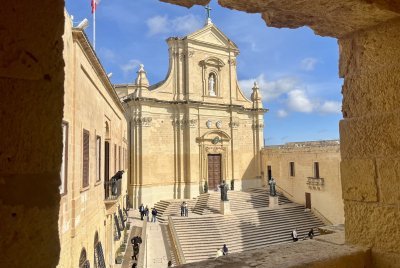
Victoria has a few things going for it: Firstly the view from the elevated citadel all over Gozo and beyond is spectacular. The is, when you enter the town walls, a nice compact square with stairs ascending to the Cathedral, with a cupola and impressive baroque tomb stones inside. Downtown, there is another basilica dedicated to St. George with a baldacchino which is an obvious smaller copy of the famous one in St. Peters in the Vatican by Bernini and a lovely, Byzantine chapel with mosaics. Like its sister-town of Mdina on Malta the high walls of the citadel are impressive site from far away and every direction.
But that is about it! The citadel has very little left beyond the walls and the citadel, large parts consist only of walls and grass. If you compare it to Mdina, which in my opinion has no OUV, it has considerably less to offer. It is lovely as a visual centre of Gozos gorgeous landscape but then you would have to include the entire island. The most outstanding feature are its churches but there are even more impressive churches on Gozo alone, for example the neo-renaissance Parish church in Qala, the neo-baroque Nadur Parish Church, the Xaghra parish church with 20th century frescoes, the huge rotunda of Xewkija, and above all the really stunning Basilica of the National Shrine of the Blessed Virgin of Ta' Pinu, imitating italian romanesque style in an english fashion, for me the most beautiful church on …
Keep reading 0 comments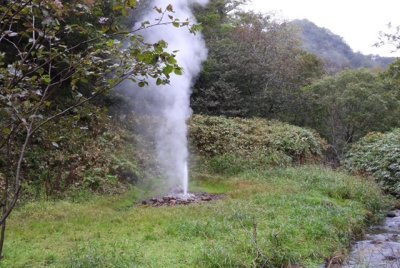
Visit date(s): September 25 & 26, 2024
Nearby sites on trip: Jomon prehistoric sites, although they are not very close. We saw our first one 3 days later.
Overnight location: Utoro
Location(s): Shiretoko National Park: Goko lakes hike, Furepe waterfall hike, Cape Shiretoko sightseeing boat, Shiretoko pass drive, Rausu Kanketsusen Geyser (photo)
Travel method(s): Car, foot, boat
Travel duration: Less than 10 minute drive to the park. Less than 2 hour drive to the furthest point on the other side of the peninsula. We reentered the park at the field house on the north side.
Visit duration: 2 days
OUV: We saw lots of deer, birds and a fox. The bears are given priority over humans in areas where they like to feed, so it appears that the ecosystem is being protected. It is a wild and beautiful place.
Best of: Sightseeing boat trip to the cape. It was good light and although there were waves, the Aurora was very stable. There were a few waterfalls, intriguing rock formations and some abandoned buildings. We were also, separately, thrilled to see a small geyser that I hadn’t read about beforehand!
Worst of: There were not a lot of food options in Utoro in the evening and they closed early. We did have some excellent food, but it was work to find it.
Keep reading 0 comments
Site visited in November, 2024.
Nepali proposal for inscription in 2026. Once a capital of ancient Shakya capital city where Siddhartha Gautam spent his princely life before he became Lord Buddha. According to data presented on information board at the entrance Tilaurakot is the best preserved Early Historic city and hinterland in South Asia. Occupied between 900 BC and 1000 AC. Archaeologists revealed remains of early village transformed in the 6 century BC (Kushan Period) into a fortified grid-planned city with many later structures (temples, houses, palaces) constructed in brick. Development continued in the first millennium AD forming central walled complex, a large brick-lined pond in the middle of the city together with multiple residential and monastic structures around an industrial suburbs beyond city walls. The complex was rediscovered in 1890 and identified as ancient capital of Shakya Kingdom associated with Siddhartha Gautam.
The site looks well prepared for being a UNESCO heritage, partly fenced, well marked with information panels in Nepalese and English. Area within city walls is equipped with wooden walkways. The most important landmarks are: partly reconstructed town walls, Eastern Gate (where according to tradition Buddha started his journey of spiritual enlightenment), temple of Samai Mai with elephants statues, central pond and central structural complex. All monuments (except the temple that looks new and still in use) are preserved in similar style like in Lumbini. If you have time you can also see the remnants of twin stupas (outside the complex – leave the side …
Keep reading 0 comments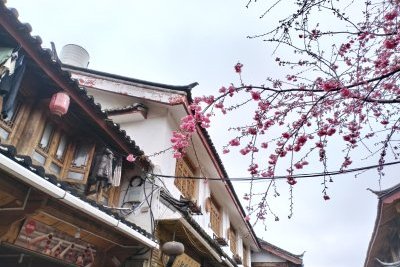
The previous reviews seem to focus on the components of Dayan Old Town and the Heilongtan Pool, both of which are located in the centre of Lijiang. I visited neither but had the opportunity to see Shuhe Old Town, a more distant part of the site. As a whole, it appeared to me as one of the many tourist-oriented Chinese old towns that are commercialized to such a degree that the authenticity becomes questionable. However, some things stood out to me about Shuhe specifically. Obviously, as the town represents the Naxi minority, its architecture is a bit different (I especially enjoyed the roofs). Many flowering and fruiting trees and bushes are planted throughout the town, making the walk enjoyable despite possible crowds. The urban layout of the streets and canals is definitely preserved. The use of Naxi pictograms on the labels is also very interesting. I can also confirm that Els’s recommendation of local food still holds true (PS: the cheese is called rubing and it is definitely worth trying).
And now we get to the more negative section. As I already said, the entire town is a continuous commercial zone. Every building is a shop or a restaurant, so don’t expect any significant authentic sections in the interiors and lower portions of the majority of the buildings. Although most (if not all) buildings in the area are not taller than two floors, they often have new modifications (windows, extensions, etc.) that may visually clash with the overall look …
Keep reading 0 comments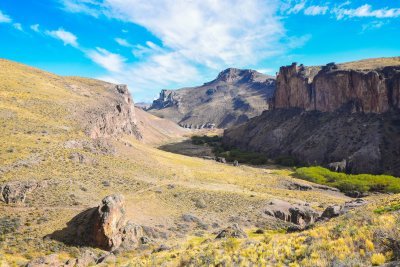
My review will cover how we visited Cueva de las Manos from the south and also provide an update on the ticket price situation. We visited the prehistoric site in March 2025.
El Chalten to Gobernador Gregores: Light rain causes detour
Our visit to southern Patagonia started in El Calafate, where we rented a compact car (automatic drive) for five days at the cost of 416,688 Argentinian pesos, which was $549.86 Canadian (or approximately $383 USD). We decided to rent a car because bus tickets around Patagonia were very expensive. For example, a return bus ticket between El Calafate and the town of (not the glacier) Perito Moreno would have cost as much as a whopping $728 Canadian (or approximately $508 USD) for the two of us.
From El Calafate, we then travelled to El Chalten from a few days of hiking.
From El Chalten to Cueva de Las Manos was a 7 to 8 hour drive. As such, we decided to split up the drive by staying in the town of Gobernador Gregores for a night, which was approximately 4 hours drive from El Chalten. Reserving lodging in the town proved to be easy as there was a decent amount of options.
On our drive to Gobernador Gregores, we encountered a police roadblock in a small town called Tres Lagos. Despite the light drizzling of rain, the police told us that Route 40 was closed due to bad road conditions. We were resting at …
Keep reading 0 comments
Oporto! March 2025 visit. I think my expectations for this city were a bit too high. It's certainly nice and you won't regret visiting here, but in my opinion the experience wasn't mind-blowing. You can easily see all of the most important sites within one and a half days in the city and feel content. In general, everything is colorful and covered in tilework ("azulejos"). It's a city that pictures well, especially in the sun. Everything worth seeing is all in the city's center and can be walked to – no need for public or private transportation.
Here's a quick run-down of items we visited in our two-day walking tour, from personal favorites to least:
- Gardens near the Crystal Palace - Gorgeous and completely underrated. A local friend showed us this location and it was exquisite, but I had not seen it on many online lists beforehand. Has a great mini tower that gives a viewpoint of the river, too.
- Tower of the Clérigos - A great little museum built into your journey spiraling up the tower that affords you the best viewpoint in all of Oporto.
- Bolhão Market - I could spend hours here, this market was awesome. So, so, many delicious and fun things to look at and try. This is coming from someone who has seen already seen a lot of these "outdoor stall markets" in Spain!
- Church of Carmo - Easily the best of Oporto's churches to visit …
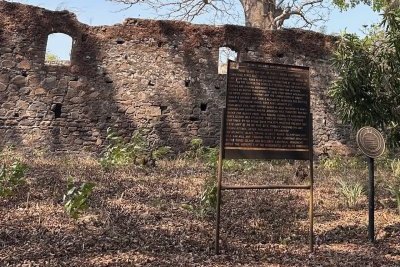
I am now on a Lupine tour in March 2025. Even though it was not on the schedule, five of us payed extra to get here and we're taken there by Bassie from Lupine West Africa +232 76 947442. From Freetown it is more than an hour on a speedboat (what the locals call a speedboat, just a bigger dingy with a Honda engine). You go up on Sierra Leone River, passing by the ferry loading, passing by a railroad that ends up half way above the river and it is used by Chinese to load the iron ore. Then passing by Tasso Island, much bigger and full of locals.
Arriving at Bunce Island, we had a vivid tour (almost reenactment) describing all the atrocities that took place here. Even without a guide it is easy to identify the ruins, the gate of no return etc. But there is no signage besides the ones at the pier and the ones by the wall pictured here. We had a 75 minutes intense tour, some people surely could do it in 30 minutes. There are also some impressive trees. There is a newish building apparently built with money donated by Colin Powell in 2002 for a library/museum (it was closed, nothing there to see). There is also a cemetery on the other side of the island. I doubt there is any effort to pursue a WHS nomination, even though my opinion is that this certainly deserves it. There were two …
Keep reading 0 comments